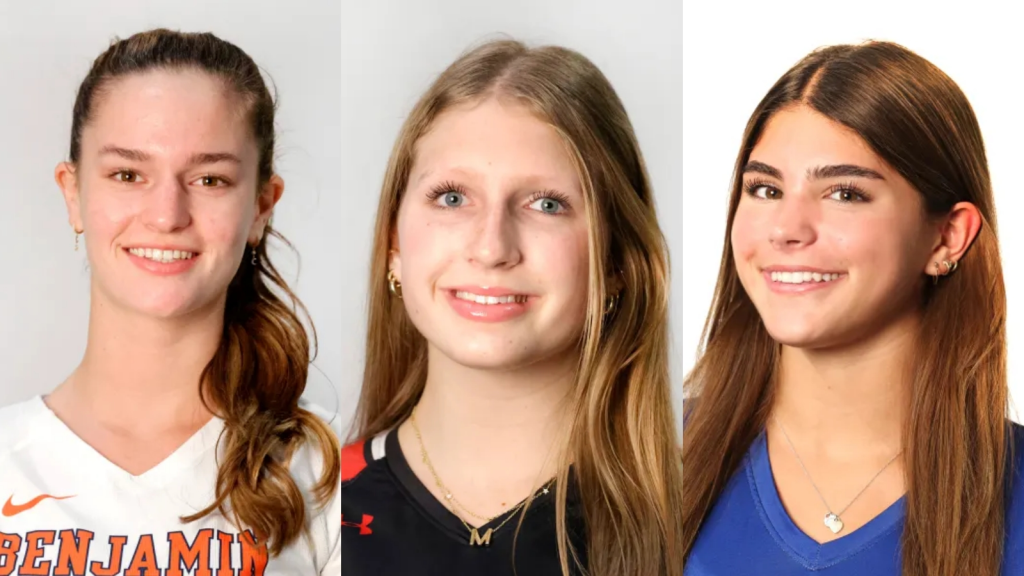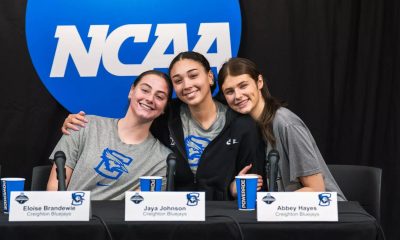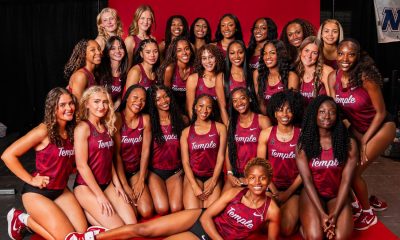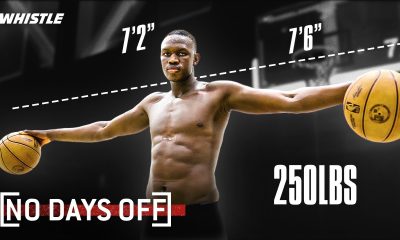Sports
9 foods high in vitamin K, according to dietitians



Green or purple, Rizzo calls cabbage an “affordable, crispy veggie that adds flavor and nutrition to any meal.”Parsley delivers a jumbo dose of the nutrient, along with vitamins A and C. More than a garnish, Rizzo calls parsley a nutrient-rich, flavorful herb to season foods. Parsley can be added to soups, sauces, pesto and smoothies, too.Most U.S. diets contain adequate amounts of the nutrient, according to the National Institutes of Health. The recommended daily amount is 120 micrograms for men and 90 micrograms for women.The body needs vitamin K to support normal blood clotting, wound healing and strong bones.Vitamin K doesn’t get as much attention as nutrients like vitamin C or D, but it’s important for health and abundant in green leafy vegetables and other foods.“That’s not surprising, given that most people don’t eat the recommended amount of veggies every day,” Rizzo says.“Vitamin K plays an important role in bone metabolism and maintaining a healthy bone mass. This is really important for people to know, especially postmenopausal women who are worried about bone loss,” says registered dietitian Natalie Rizzo, nutrition editor for TODAY.com.Broccoli is part of the cruciferous family of vegetables, which contain biologically active compounds that have been studied for their potential to prevent cancer.Vitamin K also aids in the production of adenosine triphosphate, or ATP, which supplies energy to the body’s cells and muscles, she adds.But there’s conflicting information on whether people get enough vitamin K in their diet, Rizzo notes.Eating a diet high in vitamin K is linked with a lower risk of atherosclerotic cardiovascular disease, which includes heart attack and stroke, studies have found.Besides vitamin K, turnip greens are loaded with vitamin A, vitamin C and folate.If your diet is lacking in vitamin K, ahead you’ll find nine foods high in vitamin K.However some research has found only about one-third of adults eat enough of it.Like spinach, kale is rich in nutrients and low in calories. But it’s slightly higher in fiber and protein than spinach. “Kale is packed with beta-carotene and the sight-saving nutrients lutein and zeaxanthin,” registered dietitian Frances Largeman-Roth previously told TODAY.com.
Parsley
- 1 cup fresh, 984 micrograms of vitamin K
- 1 tablespoon fresh, 62 micrograms of vitamin K
One study calls vitamin K “a neglected player in cardiovascular health,” with researchers looking into whether vitamin K has a role in preventing the calcification of coronary arteries — the buildup of calcium that hardens and narrows them, raising heart disease risk.Registered dietitian Kristin Kirkpatrick includes it in her list of foods to add to the Mediterranean diet, noting parsley may help in reducing the risk of several cancers and has been associated with better brain health.
Collard greens
- 1 cup raw, 157 micrograms of vitamin K
It’s also a cruciferous vegetable, plus cabbage is high in fiber and antioxidant compounds. Enjoy it in coleslaw, kimchi or sauerkraut, or braised for a hot side dish.Cassetty puts spinach at the top of her healthiest vegetables list, praising its “impressive nutrient profile and wide-ranging health benefits.”
Brussels sprouts
- 1 cup raw, 156 micrograms of vitamin K
Registered dietitian Keri Glassman includes this cruciferous vegetable on her list of inflammation-fighting foods to add to your diet. Brussels sprouts contain sulforaphane, an antioxidant that’s been shown to reduce levels of inflammatory compounds, she notes.“However, most people don’t have their vitamin K levels assessed during a normal blood draw because deficiencies are rare.”
Spinach
- 1 cup raw, 145 micrograms of vitamin K
The fiber in broccoli promotes digestion and helps control appetite, she adds.You’ll get doses of calcium, potassium, iron and magnesium.“Obviously, calcium and vitamin D are incredibly important, but vitamin K factors into bone health, too.”
Turnip greens
- 1 cup raw, 138 micrograms of vitamin K
They come with a lot of fiber and make registered dietitian Grace Derocha’s list of high-fiber vegetables with major health benefits. Turnip greens are also regularly found in soul food recipes.One of the first shots babies receive is an injection of vitamin K to prevent potentially life-threatening bleeding.
Broccoli
- 1 cup raw, 92 micrograms of vitamin K
Registered dietitian Samantha Cassetty includes collard greens in her list of the healthiest vegetables, noting they contain antioxidants and are packed with nutrients, including 25% of the daily requirement for calcium.Eating foods with glucosinolates — the sulfur-containing compounds in broccoli — may protect cells from DNA damage, inactivate carcinogens, promote cancer cell death and have anti-inflammatory effects in the body, Rizzo notes.Symptoms of a vitamin K deficiency include bruising and bleeding problems since blood will take longer to clot, the NIH notes. If you’re taking a blood thinner, talk with your doctor before changing your diet.
Kale
- 1 cup raw, 81 micrograms of vitamin K
Spinach can be eaten cooked or raw, and added to salads, smoothies, soups and pasta dishes.If you’re assembling a salad, the type of lettuce matters. Iceberg lettuce is significantly less nutrient-dense than other greens, dietitians say, so a better choice may be romaine or green leaf lettuce.
Lettuce
- 1 cup of Romaine lettuce, 48 micrograms of vitamin K
- 1 cup green leaf lettuce, 45 micrograms of vitamin K
Collard greens are also a low-carb, keto-friendly vegetable, Kirkpatrick says.They’re delicious when roasted, or seared to encourage caramelization, or raw and crunchy — try one of TODAY’s Brussels sprouts recipes.“The darker colors of the lettuce make it more of a rock star,” says Susan Campbell, a registered dietitian at the Cleveland Clinic.
Cabbage
- 1 cup raw, 53 micrograms of vitamin K
Certain proteins prevent calcification throughout the body, and vitamin K is required for them to function, Kyla Shea, Ph.D., a scientist at the Jean Mayer USDA Human Nutrition Research Center on Aging at Tufts University, previously told TODAY.com.Besides helping to protect the body against chronic conditions like cancer and heart disease, eating spinach and other green leafy vegetables seems to have benefits for brain health and may slow cognitive decline with aging, a study found.
Sports
Broward 4A-1A girls volleyball first team, second team, honorable mention and coach of the year

FIRST TEAM

Yasmin Dias Tonon, OH, North Broward Prep senior: Recorded 320 kills, 194 digs, 60 aces, 40 blocks and .389 hitting percentage; registered 21 kills in a match; had 18 kills in state championship match; helped lift Eagles to district, regional and state title; Bentley University signee.

Kaylee Foreman, libero, Pine Crest junior: Team captain; recorded 625 service receptions, 393 digs, 115 assists and 43 aces; Palm League All-Tournament Team; NHSCA Academic All-American First Team; Under Armour Next Camp Series Invitee; AVCA Phenom selection; Team Florida 15U member; Yale University commit.

Mia Gold, OH, Pine Crest senior: Led the Panthers to a district and regional title; team captain; recorded 440 kills, 249 digs, 45 aces; recorded 28 kills and 13 digs in state semifinal; school record holder for kills; England National Team selection; Boston College signee.

Melia Howze, MB, Chaminade-Madonna freshman: Led Lions to district championship and 2A regional quarterfinal appearance; recorded 308 kills, 80 blocks and .443 hitting percentage; recorded 25 kills to lift team to district title win.

Samantha McMillan, OH, Coral Springs Charter senior: Led Panthers to 3A regional quarterfinal appearance; recorded 251 kills, 282 receptions and .335 hitting percentage in just 60 sets played; registered 28 kills in a match; American University signee.

Destiny Wiggins, libero, North Broward Prep senior: Recorded 436 digs, 438 service receptions, 91 assists and 36 aces; registered 31 digs in a match; had 22 digs in state championship match; helped lift Eagles to district, regional and state title.
SECOND TEAM
Isabella Collado, setter, Pine Crest eighth-grader
Gabriella Florian, OH, Pine Crest junior
Camryn Kanell, MB, Calvary Christian Academy senior
Emma Luehrs, setter, North Broward Prep eighth-grader
Jayda Palumbo, OH, North Broward Prep junior
Adriana Powers-Hadley, OH, Sagemont junior
HONORABLE MENTION
American Heritage: Lyla Pack
Calvary Christian: Sophia Azevedo, Reese Mittauer, Jada Stephenson
Cardinal Gibbons: Jordan Andrews, Ava Flores, Beatriz Matos
Chaminade-Madonna: Paloma Castellanos, Keylanis Cruz, Amy Wood
Coral Springs Charter: Olivia Greco, Mia Luersen
Franklin Academy: Sofia Hernandez
Highlands Christian: Ali Diaz, Emily Eades
North Broward Prep: Layni Tobias
Pine Crest: Jasmine Florian, Elizabeth Sauby, Elle Schneider
Sagemont: Daniella Seijo
Sheridan Hills: Sophia Broch, Jasmine Cummings, Deborah Point Du Jour
University School: Daniella Lugo
Westminster Academy: Zoe Burton, Amelia Benkendorf
COACH OF THE YEAR

Brian Coughenour, North Broward Prep: The Eagles finished 26-2, earned a district championship and regional title and won the 4A state championship. “I am very proud of this team. They came into the season ready to work hard and with one goal in mind in bringing North Broward Prep their first volleyball state championship. They earned that championship along with a number of individual awards. I held them to a very high standard and they not only met it but exceeded my expectations. I am very excited for the future of this program and blessed to be part of it.”
Sports
Broward 7A-5A girls volleyball first team, second team, honorable mention and coach of the year

FIRST TEAM

Fabiana Castro, setter, Archbishop McCarthy senior: Led Mavericks to district and regional title; team captain; registered 490 assists, 187 digs and 64 aces; recorded 39 assists in state semifinal win; will play volleyball and beach volleyball for Miami-Dade College.

Sydney Guerrier, setter/OPP, St. Thomas Aquinas senior: Team co-captain; registered 383 assists, 146 kills, 144 digs and 31 blocks; BCAA All-Star Team MVP; FACA All-Star; AVCA All-Region, All-American Second Team, Best and Brightest Third Team and Honorable Mention selection during career; American University signee.

Sophia Guzman, OH/OPP, Cypress Bay senior: Led the Lightning to district title and Class 7A regional final; recorded 274 kills, 4.0 kills/set and 250 receptions; registered 20 kills in regional semifinal win; selected team captain and team MVP; Southern Connecticut State University signee.

Paige Hill, OH, Western senior: Recorded 235 kills, 360 digs, 69 aces and 36 blocks; registered 20 kills in a match; two-year team captain and four-year starter; will play volleyball for Emmanuel University.

Emmi Merhi, OH, St. Thomas Aquinas senior: Helped lift Raiders to district and regional championship; recorded 248 kills, 250 digs, 437 receptions and 36 aces; registered 14 kills in regional semifinal win; Troy University signee.
SECOND TEAM
Isabella Cabrera, OH, St. Thomas Aquinas sophomore
Erin Huang, setter, Cypress Bay senior
Brianna Masaracchio, OH, Archbishop McCarthy senior
Adriana Medrano, libero, St. Thomas Aquinas senior
Sanai Mitchell, MB, Western senior
Hailey Trebbien, setter, St. Thomas Aquinas senior
HONORABLE MENTION
Archbishop McCarthy: Raquel Hurtado, Valentina Santamaria, Em’Pris Seetal
Cypress Bay: Julia Diaz, Margot Lantrade, Victoria Urizar
Deerfield Beach: Giovanna Campos
Everglades: Jonnele Mends, Zoehe Sharpe
Flanagan: Krystine Escalante
Fort Lauderdale: Lorena Rondon
Pembroke Pines Charter: Julie Lobato, Sophia Peterseil, Abigail Reynolds
Piper: Melody Delamotte, Isabella Delgado
St. Thomas Aquinas: Leah Novatne, Violette Zayas
Stoneman Douglas: Isabella Cox, Alyssa James
Western: Valeria Luque, Alyssa Noble, Sarah Perez
CO-COACHES OF THE YEAR

Lisa Zielinski, St. Thomas Aquinas: The Raiders had a 27-5 record, won a district title, regional championship and finished as the Class 6A state runner-up. “Reaching the championship is never easy, and this team earned every bit of it. After losing six starters
last year, I don’t think anyone thought we’d be back. We didn’t walk away with the trophy, but we proved we’re a team that battles. We competed with heart, toughness and the kind of fire that’s hard to teach.”

Robert Perez, Archbishop McCarthy: The Mavericks had a 28-4 record and captured the district and regional title. They finished as the Class 5A state runner-up. “We had a goal and we all locked into it. It was one team and one dream. We knew this was the team that can finally take that step. The program was due for a final four for the first time in school history. From day one, the entire roster knew this team was special. Practices were special and we competed versus each other like there was another team on the other side of the net. This roster made each other better because how deep and talented we are. The ladies in teal are for real.”
Sports
Volley Tots launches at BNL, introducing young athletes to volleyball fundamentals

Local Weather Alerts
There are currently no active weather alerts.

WBIW
error: Content is protected !!
Sports
Nebraska volleyball fans saw 62% of All-Americans during 2025 season
Sports
Palm Beach 4A-1A girls volleyball first team, second team, honorable mention and coach of the year

FIRST TEAM

Ava Castro, OH, Cardinal Newman senior: Led the Crusaders to a 3A regional quarterfinal appearance; recorded 328 kills, 207 digs, 38 blocks, 26 aces and .374 hitting percentage; registered 26 kills in a match; holds the school record for kills; Boston College signee.

Emmie Hill, MB, Benjamin sophomore: Led the Bucs to a 2A regional quarterfinal win; recorded 210 kills, 63 blocks and .351 hitting percentage; registered 20 kills in a match; USA Volleyball National Team Development Program selection.

Mikayla Matuszko, OH, King’s Academy freshman: Led the Lions to a district title and 3A regional semifinal appearance; recorded 314 kills, 173 digs and 61 aces; registered 22 kills in a match; USA Volleyball U17 National Team selection.

Riley McCaughey, setter, Benjamin senior: Led the Bucs to a district championship and 2A regional quarterfinal win; recorded 600 assists, 187 digs, 97 kills and 63 aces; registered 55 assists in a match; 3,064 career assists; University of South Florida signee.

Luiza Queiroz, OH, St. Andrew’s seventh grader: Led the Scots to a 3A regional semifinal appearance; recorded 420 kills, 187 digs and 69 aces; registered 41 kills in a match.
SECOND TEAM
Dayana Acevedo, setter, Cardinal Newman senior
Lyla Buser, OPP, Cardinal Newman senior
Caitlin Crino, setter, Boca Raton Christian junior
Miranda Knoll, OH, King’s Academy junior
Taylor Walsh, setter, St. Andrew’s sophomore
Caroline Wright, OH, Boca Raton Christian sophomore
HONORABLE MENTION
American Heritage-Delray: Dagan Rothbaun, Daniela Staton
Atlantic Christian: Anayah Enamorado
Benjamin: Mackenzie Bryan, Londyn Clark, Emma Markin
Boca Raton Christian: Brianna Nahmod, Mackenzi VanZwieten
Cardinal Newman: Olivia Peterson
Dreyfoos: Amelia Gallogly, Erin Larsen
Jupiter Christian: Addison Dorsey
King’s Academy: Bella Pons, Alanis Molina, Hunter Saltalamacchia
Lake Worth Christian: Cassidy Childers, Savannah Monier, Ella Vandenberg
Oxbridge Academy: Jessica Jerabek, Olivija Kozul
St. Andrew’s: Ashlyn Cobb
St. John Paul II: Meallen Gunther, Emily Rodriguez, Lyla Tomko
Suncoast: Bella Zingaro
COACH OF THE YEAR

Len Visser, Boca Raton Christian: The Blazers won a district title, regional championship and captured their first girls volleyball state championship in school history. They won seven straight matches to close the season. “I am proud that every girl was part of winning states. It’s special because the girls persevered through some very close losses. “We played like a team and I had total confidence in them. They all trusted each other. It’s truly one of my closest teams and they lifted each other up.”
Sports
Ella Brodner, Jupiter Christian senior; Hannah VanZwieten, Boca Raton Christian sophomore

Jupiter Christian senior outside hitter Ella Brodner reached 400 kills in a single season for the first time while Boca Raton Christian sophomore Hannah VanZwieten delivered a remarkable performance throughout the playoffs to lift the Blazers to their first girls
volleyball state championship in school history.
The two top performers were recognized as the Sun Sentinel’s Palm Beach 4A-1A girls volleyball co-players of the year.
Brodner, a University of Virginia signee, had 400 kills, 5.7 kills per set and a .336 hitting percentage in just 70 sets played. She also added 244 service receptions, 218 digs, 39 aces and 25 blocks. She had 35 kills in four sets in a district semifinal victory.
Brodner holds the school record with 1,488 kills and 944 digs during her five seasons with the Eagles. She recalled a victory against Jupiter during her junior season as one of her most memorable matches in high school.
“I met the expectations I had set for myself since I came in the eighth grade,” Brodner said. “To end with 400 kills in a season was pretty cool. It’s exciting to hold school records. I could not have done it without any of my teammates. Coach Sarah [Mize] helped me with my mental toughness. I wanted to be an all-around player on the court. I made amazing memories and volleyball is so much fun. It was heartwarming to see little girls look up to me and how they were inspired because of how I play volleyball.”
Brodner took on a leadership role with several newcomers joining the Eagles. “When I was in the eighth grade, I was intimidated by most of the girls,” Brodner said.
“Allison Moore was a great leader and a big influence on me. She spent time helping me with volleyball. I wanted to be a big influence on our younger players. It was a rebuilding year and I knew it was going to be difficult, but I decided to stay. It’s a great
feeling to help the girls.”
Brodner enjoyed watching her two older sisters at volleyball practices and tournaments. She joined the Jupiter Elite Volleyball Club at 7. She helped her team qualify for nationals in multiple seasons.
“The growth of our club has been amazing,” Brodner said. “All the coaches helped in my development and to where I am now.” Brodner is excited about the opportunity to play with her older sister, Sarah, at the University of Virginia.
“My sister and I have been really getting close and it’s an amazing opportunity,” Brodner said. “I’m extremely blessed to get to play with her. The ACC is very competitive and I’m excited for college volleyball.”

VanZwieten delivered for the Blazers during their playoff run to capture the state title. She had 13 kills and 12 digs in the regional championship, 19 kills, 23 digs and six aces in the state semifinal and 12 kills and 15 digs in the state championship match.
VanZwieten displayed her versatility with 254 kills, 270 digs, 221 service receptions, 157 assists, 53 aces and 30 blocks during her sophomore season.
“We lost players from last year who had played a big role,” VanZwieten said. “The difference was that we played together as a team. Our coaches did a great job and we handled the pressure. We were so happy to push through and win the semifinal against Seacrest. We practiced hard and stayed focused during the final match. We were so excited to win it.”
VanZwieten’s older sister, Grace, plays collegiate volleyball at Tusculum. Her mom serves as an assistant coach at Boca Raton Christian.
She also competes in beach volleyball tournaments with her sister, Mackenzi, who was a key contributor for the Blazers during their championship run. The sisters won a thrilling beach volleyball tournament in Tavares during a college showcase event.
“I have a lot of fun playing with Mackenzi and we connect really well,” VanZwieten said. “We have that experience together in beach volleyball and it’s helped us when playing indoor. It’s been very special.”
VanZwieten, a setter with Tribe Volleyball Club, displayed her versatility at outside hitter for the Blazers during her sophomore season.
“I was able to get out of my comfort zone and work on my game to get better,” VanZwieten said. “I played with a lot of energy and cheered on my teammates.

-

 Motorsports2 weeks ago
Motorsports2 weeks agoSoundGear Named Entitlement Sponsor of Spears CARS Tour Southwest Opener
-

 Motorsports2 weeks ago
Motorsports2 weeks agoDonny Schatz finds new home for 2026, inks full-time deal with CJB Motorsports – InForum
-

 Rec Sports2 weeks ago
Rec Sports2 weeks agoDavid Blitzer, Harris Blitzer Sports & Entertainment
-

 Motorsports3 weeks ago
Motorsports3 weeks agoJR Motorsports Confirms Death Of NASCAR Veteran Michael Annett At Age 39
-
Sports3 weeks ago
Elliot and Thuotte Highlight Men’s Indoor Track and Field Season Opener
-
Sports3 weeks ago
West Fargo volleyball coach Kelsey Titus resigns after four seasons – InForum
-

 Motorsports2 weeks ago
Motorsports2 weeks agoRick Ware Racing switching to Chevrolet for 2026
-

 NIL2 weeks ago
NIL2 weeks agoDeSantis Talks College Football, Calls for Reforms to NIL and Transfer Portal · The Floridian
-

 Sports2 weeks ago
Sports2 weeks ago#11 Volleyball Practices, Then Meets Media Prior to #2 Kentucky Match
-

 Sports3 weeks ago
Sports3 weeks agoTemple Begins Indoor Track & Field Season at UPenn This Weekend






























































